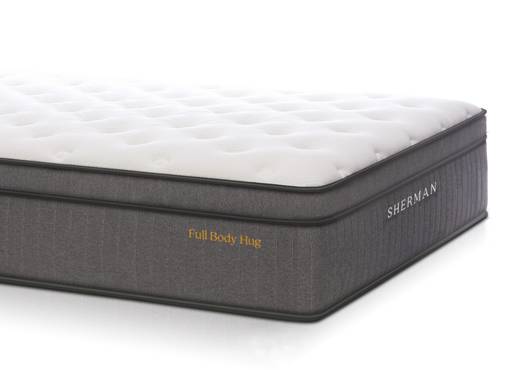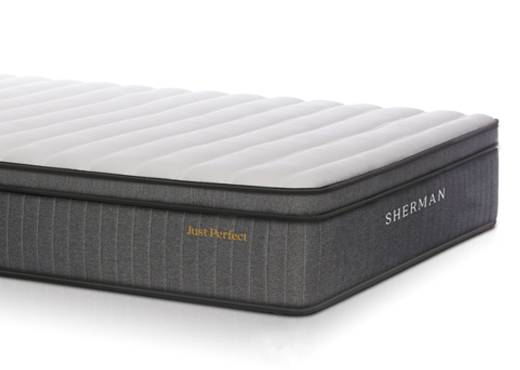
MEMORY FOAM
Memory foam (aka Visco Elastic foam) is a polyurethane foam made up with a combination of chemicals that makes it more elastic, and therefore more responsive than normal bedding foam.
It is an extremely dense foam (see our article on foam grades to understand why this is good) so it's an expensive foam. It's worth having in your mattress because it brings superior comfort and lasts much longer than less expensive foams.
Memory foam may have earned a bad rap on the internet because of it's heat-holding properties. Whilst this is partially true with any dense foam, there are many ways that you can avoid heat build up in a mattress so that you never wake up in a hot mess.
As with any premium foam, you really need a layer of at least 20mm thickness to bring you any benefit, so manufacturers who add a 6mm layer into the comfort layers are only doing this for marketing purposes. This will be listed as a ‘feature’ of the mattress, but this will have no real benefit to the sleeper.
The extraordinary elastic properties of memory foam mean that it will keep sinking until it's almost flat so it needs a base of firmer foam underneath it. This dispels the myth that some solid foam mattresses labelled "Memory Foam" are 100% memory foam. You'll find that these mattresses will have a top layer of memory foam, above a foundation layer of firmer, less expensive foam.
The density rating of memory foam is usually around 35 - 50kg.

LATEX
Latex is another type of foam that we use in bedding, made with the sap from the Para rubber tree, primarily grown in Malaysia and Indonesia.
Whilst it is an excellent foam for use in bedding, we avoid using latex layers in the Sherman mattresses because recent reports state that around 6% of the population are allergic to latex. If this is not you then a mattress containing latex is definitely worth having, as long as there is at least a 20mm layer of it used in the comfort layers of the mattress. As mentioned above, there is no benefit to the sleeper if the layer of latex is less than this.
A common misconception for some people looking for more natural components in mattresses is that latex is an organic or a 100% natural product. The truth is that the rubber sap collected from the tree cannot be processed into foam without the addition of some chemicals. At best, latex that is marketed as being natural will be around 95% natural product with the remaining 5% being chemical agents to help to form the latex into a foam.
Another issue with latex in Australia is that there are currently no regulations to prevent a manufacturer from labelling and marketing “synthetic” latex (made without any tree sap) as “genuine” latex.
The density rating of latex is usually higher than 50kg.

INFUSED FOAMS
Foam manufacturers found the equivalent to the marketing “Pot of gold at the end of a rainbow” when infused foams were first developed. The idea is that by adding some futuristic element to polyurethane foam, it could be lauded as a superior product.
It also meant that manufacturers could charge a premium for mattresses containing infused foams, without having to provide proof that this brought any proven benefits to the purchaser.
The cynic in us knows that often, these added elements cost less than the actual foam, bringing the price of the finished product down. At the same time, they can add weight to the foam, meaning that the foam sells for more.
The most common infused foam that you’ll see in mattress marketing is the cooling-gel story.
Foam manufacturers mix tiny amounts of blue gel with bedding foams and tout these foams as “cooling gel-infused”, with the marketing message that this style of foam will keep you from overheating as you sleep.
You don’t have to be a scientist to wonder about the accuracy of these claims. How a tiny amount of gel mixed through a large slab of foam can genuinely regulate your body temperature or take heat away from your body? Especially when the “beads of gel” are often so small that you can’t even see them. 
ALL OTHER BEDDING FOAMS – POLYURETHANE FOAM
Every other foam found in mattresses is usually just described as ‘Polyurethane foam’. Polyurethane is a plastic polymer that is used to produce most bedding foams, including memory foam.
This term can mean any grade of foam and any firmness of foam. See our article on foam grades for more information.
Go back to reading this article “What's the best mattress for me?”




